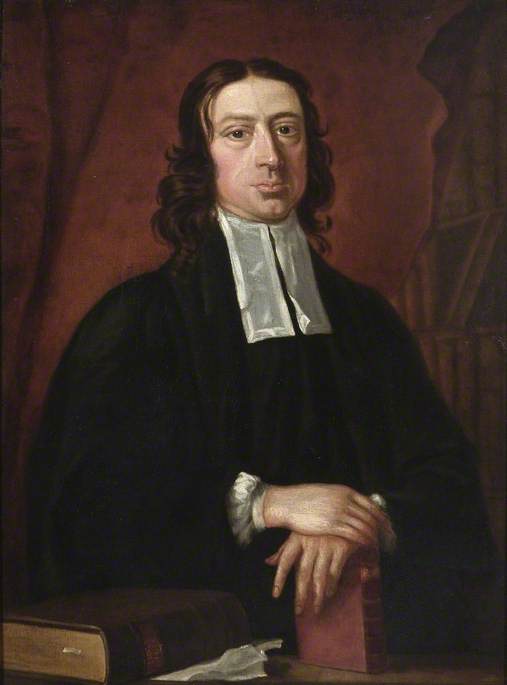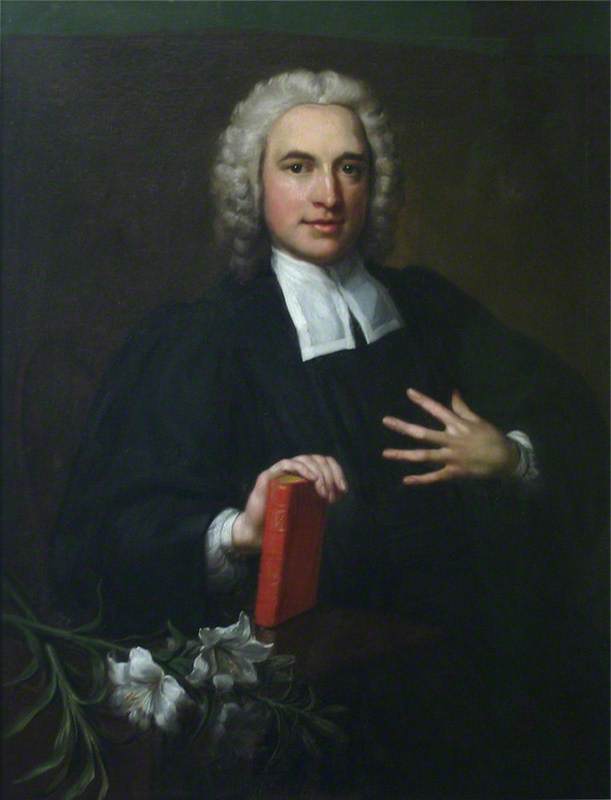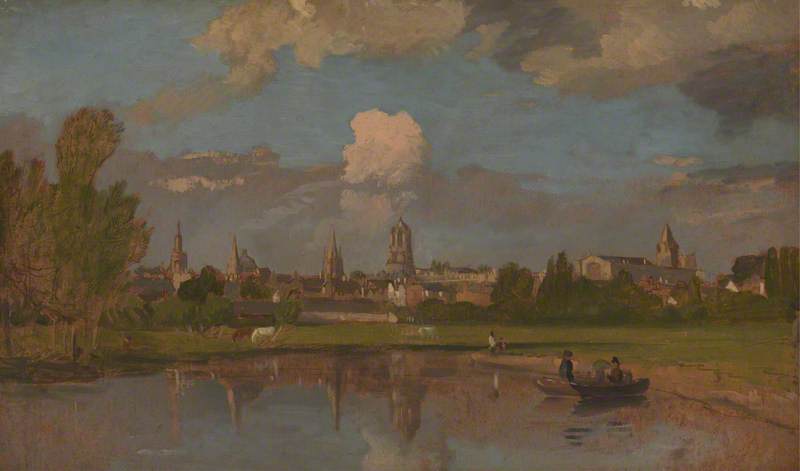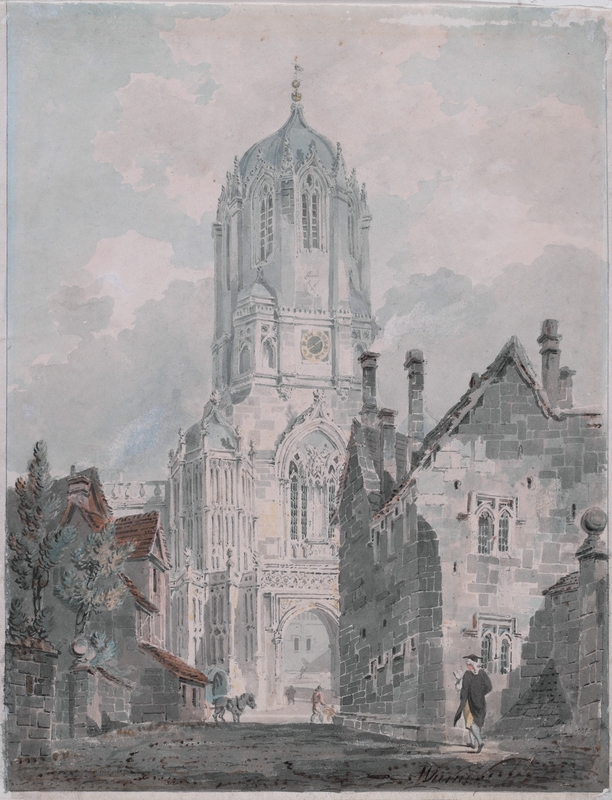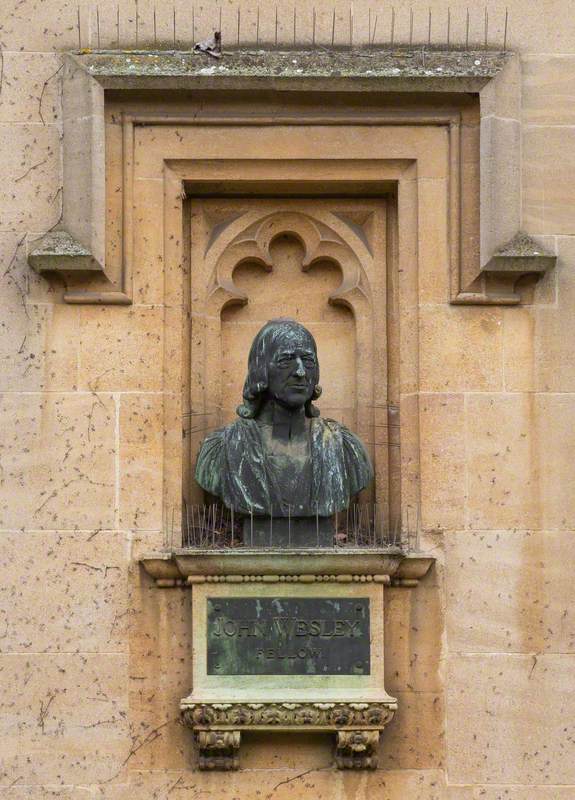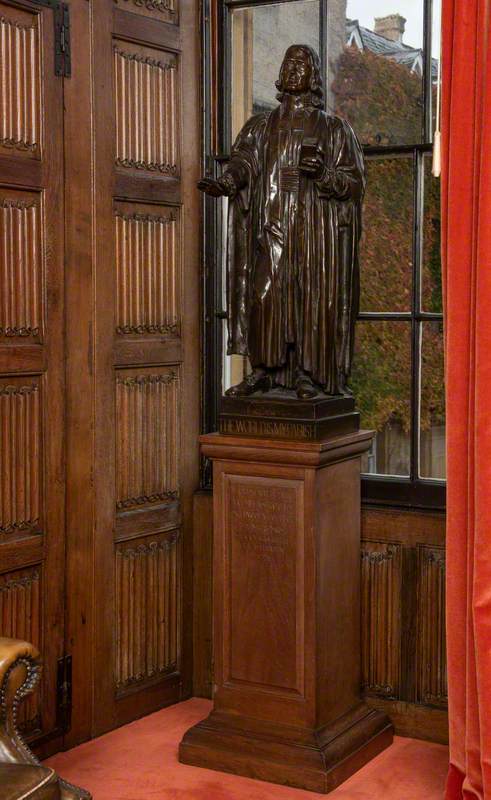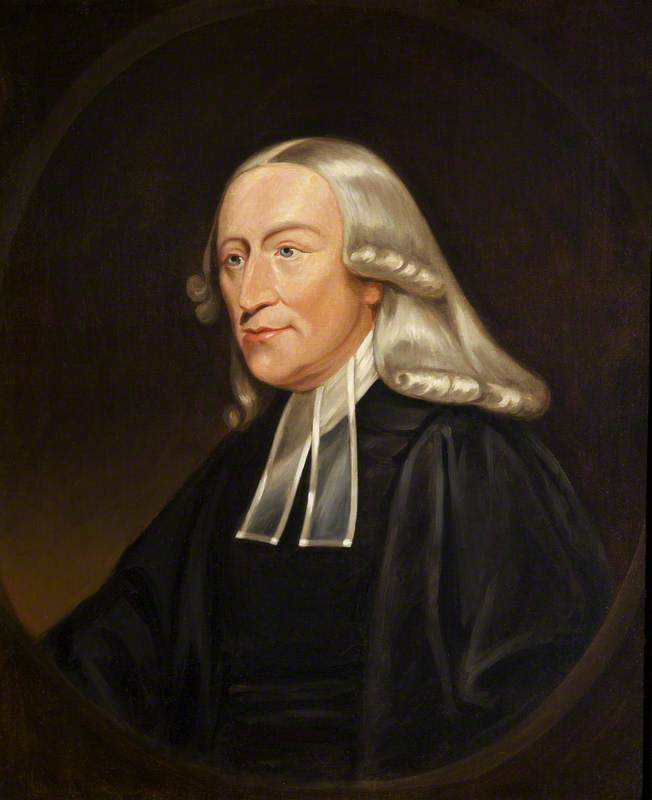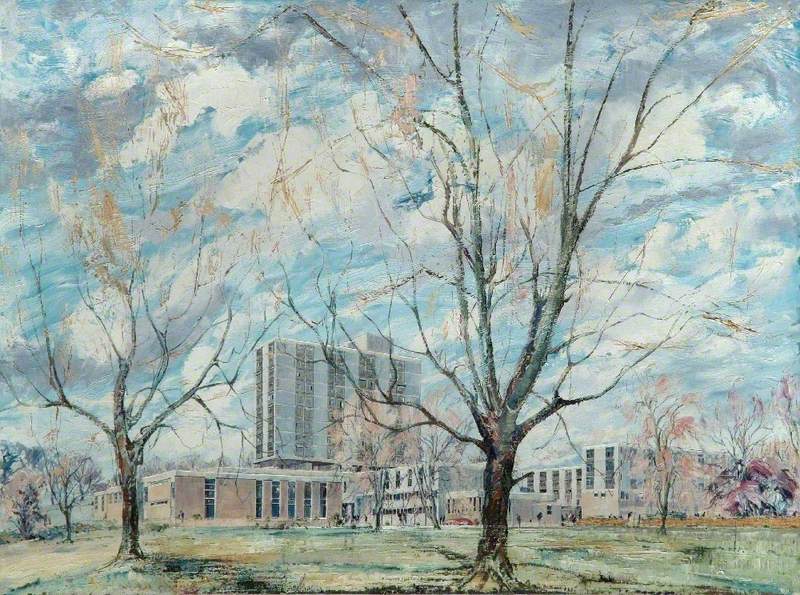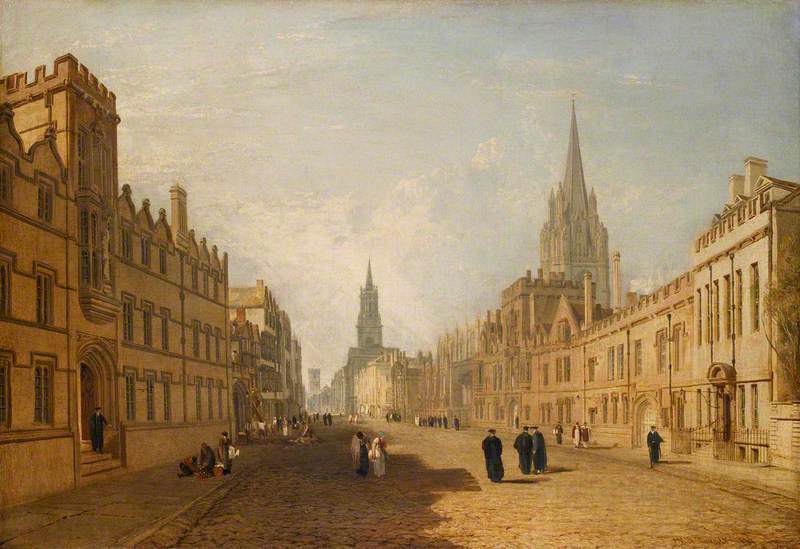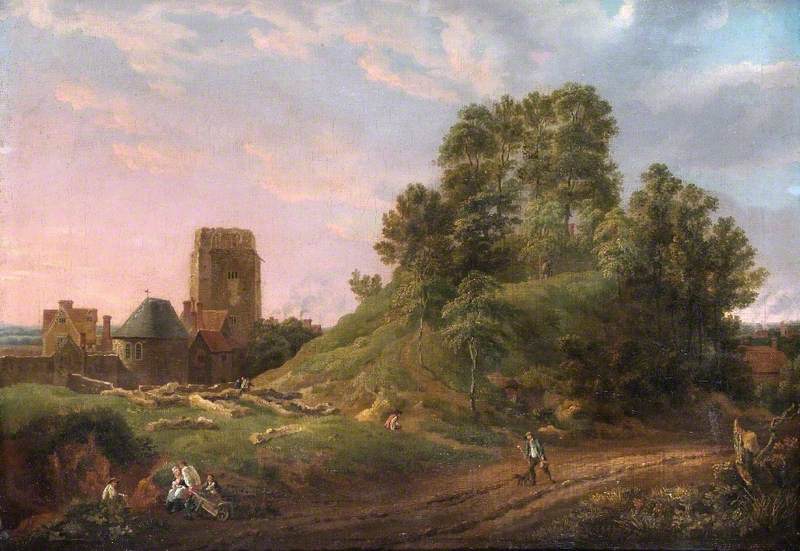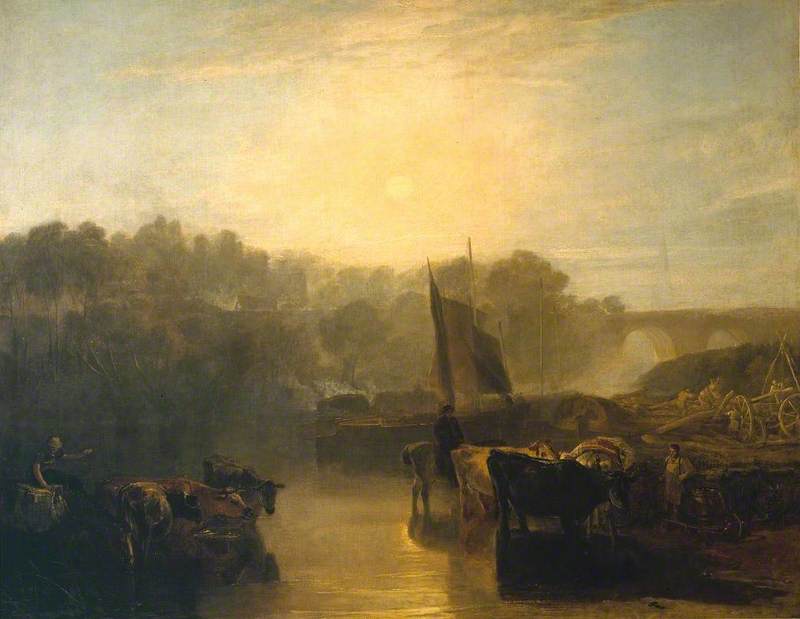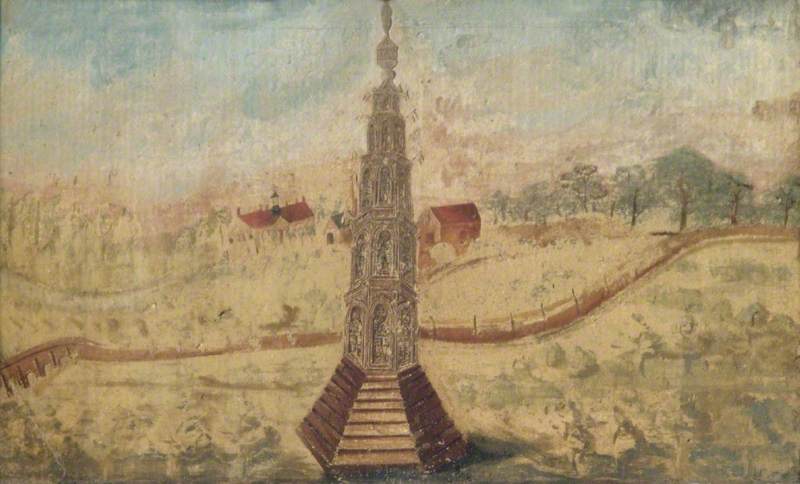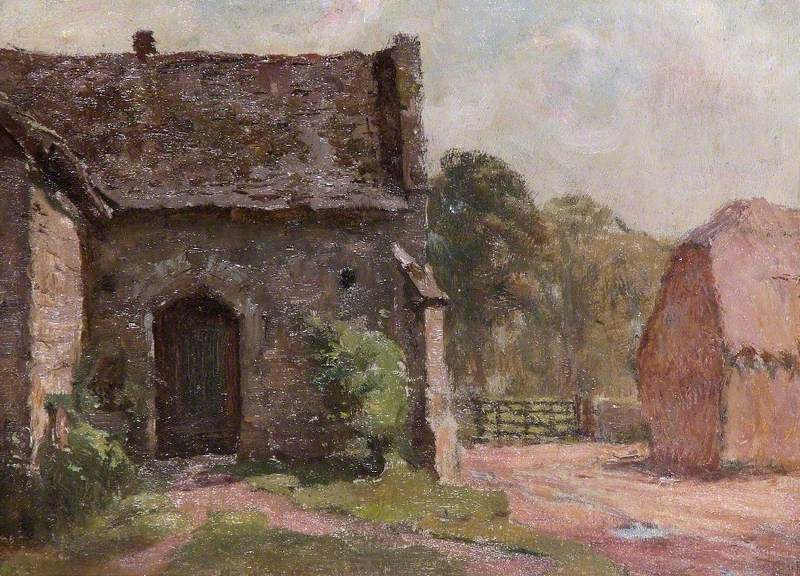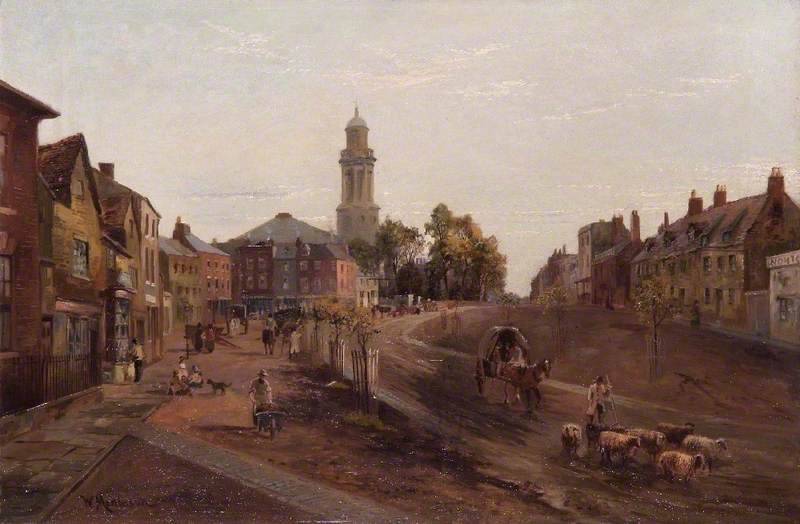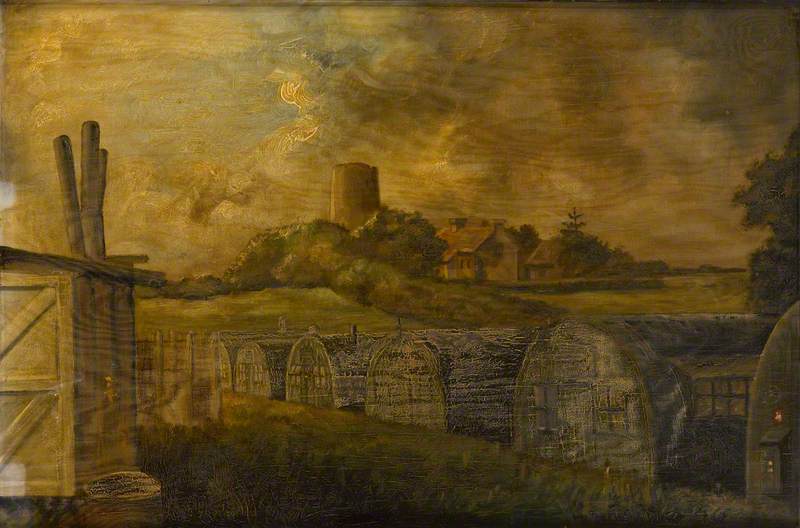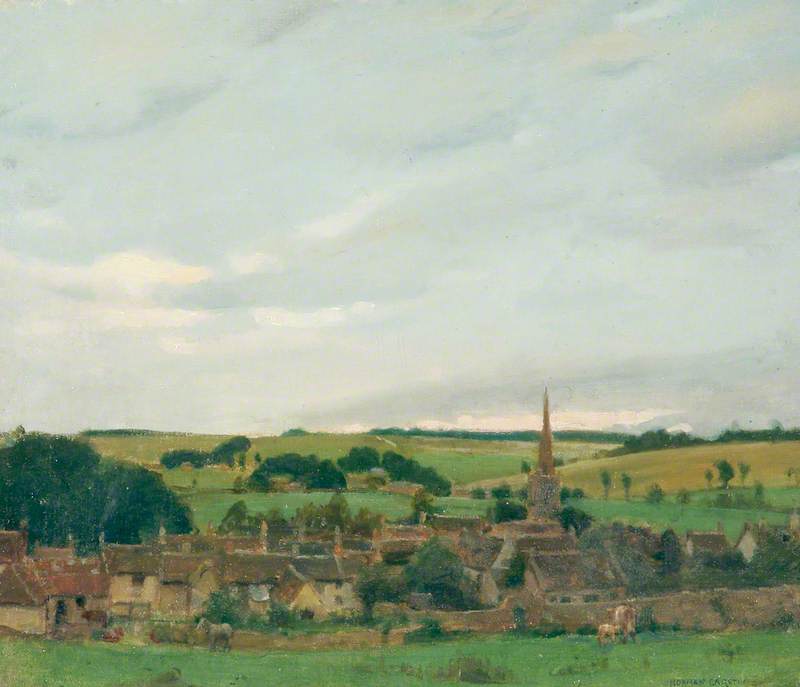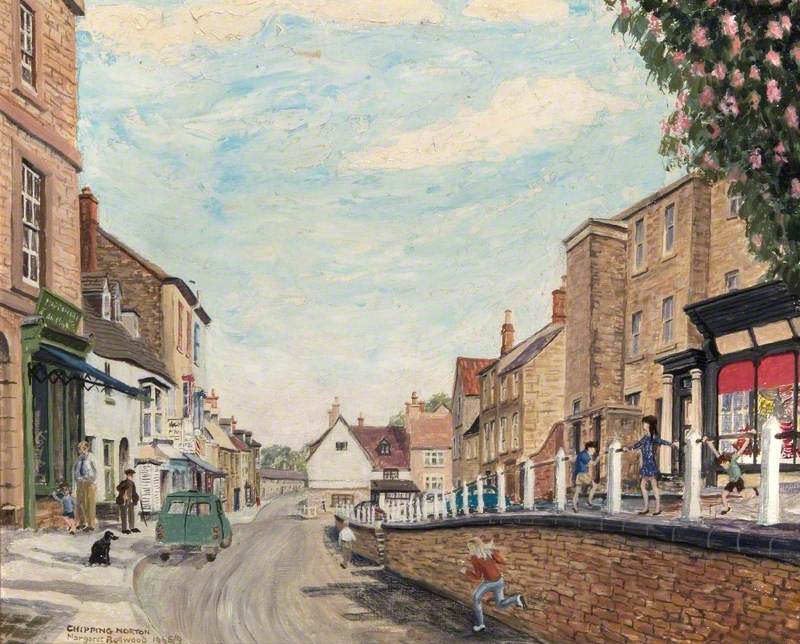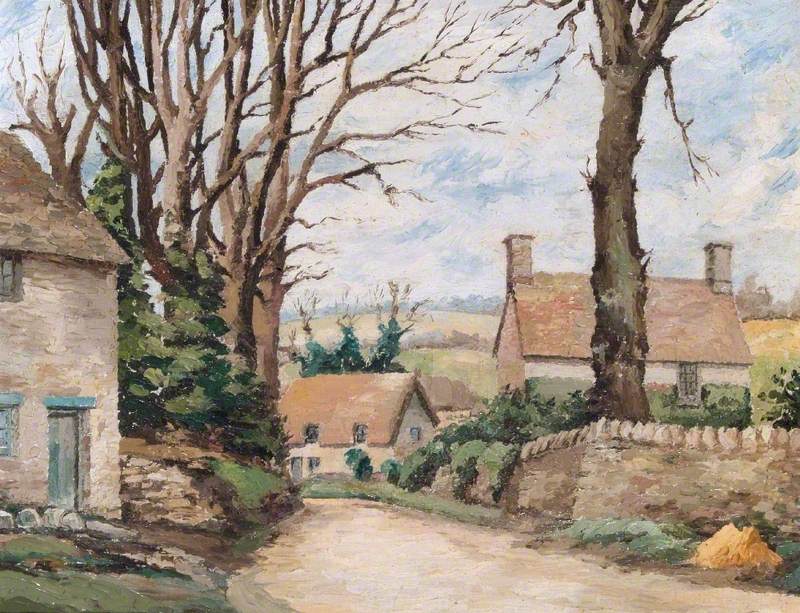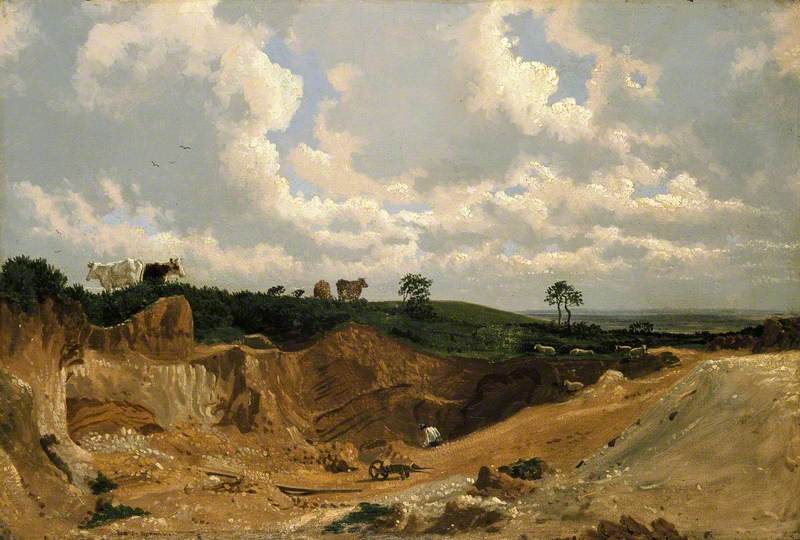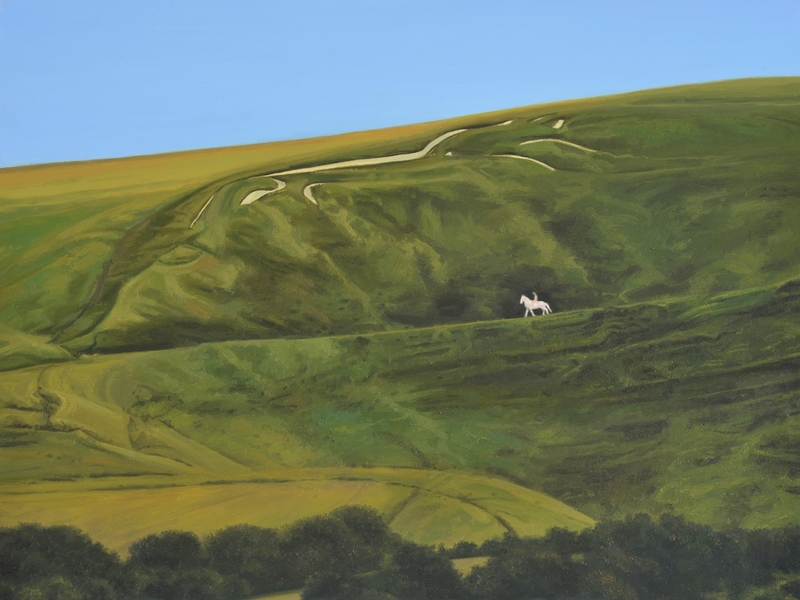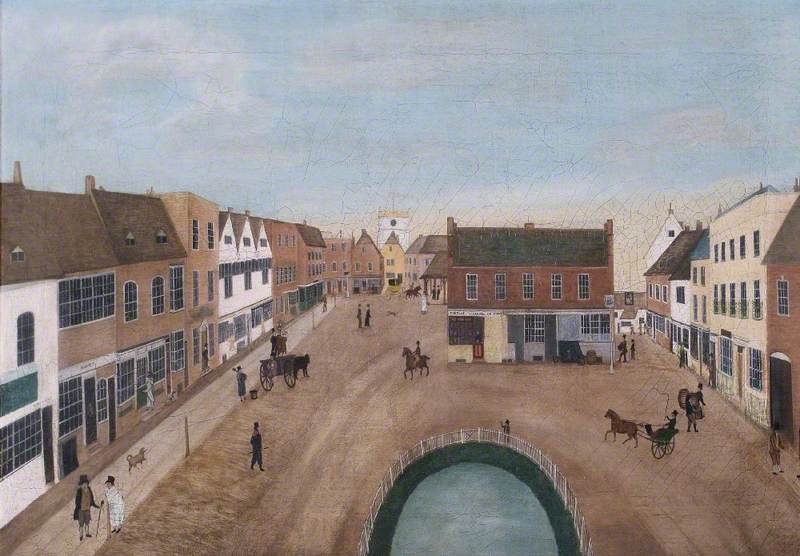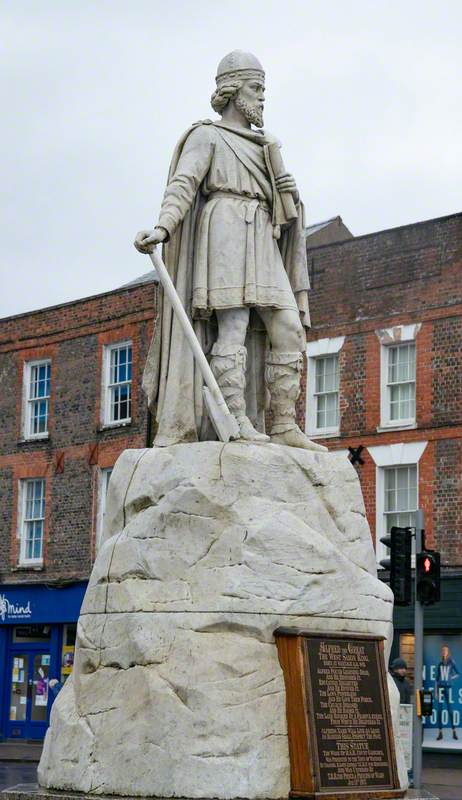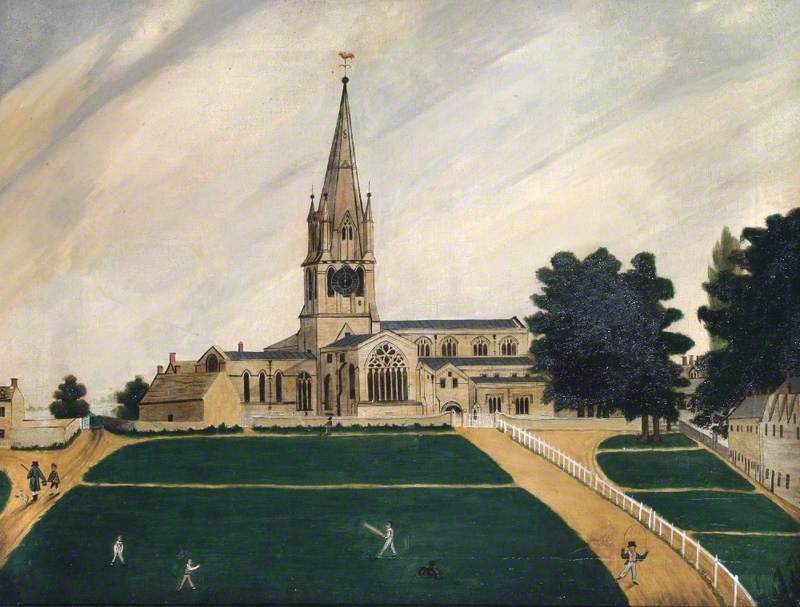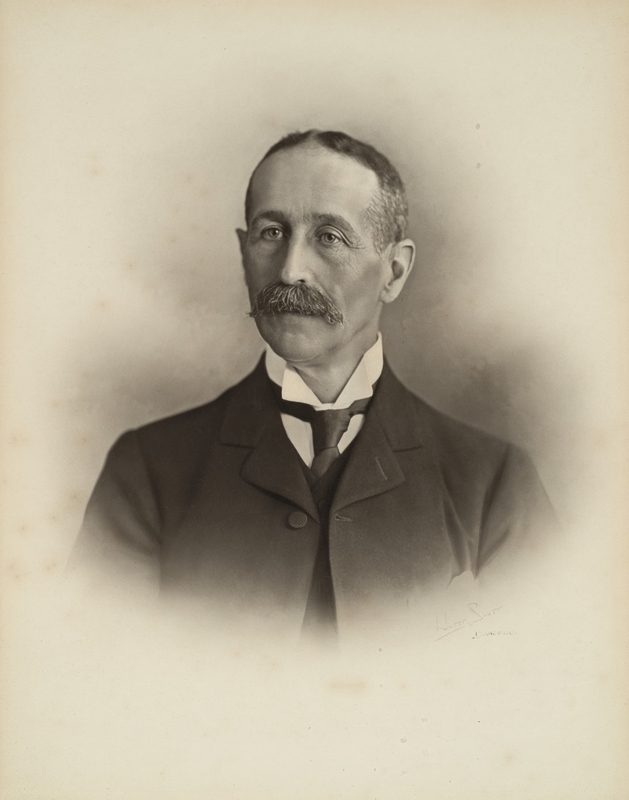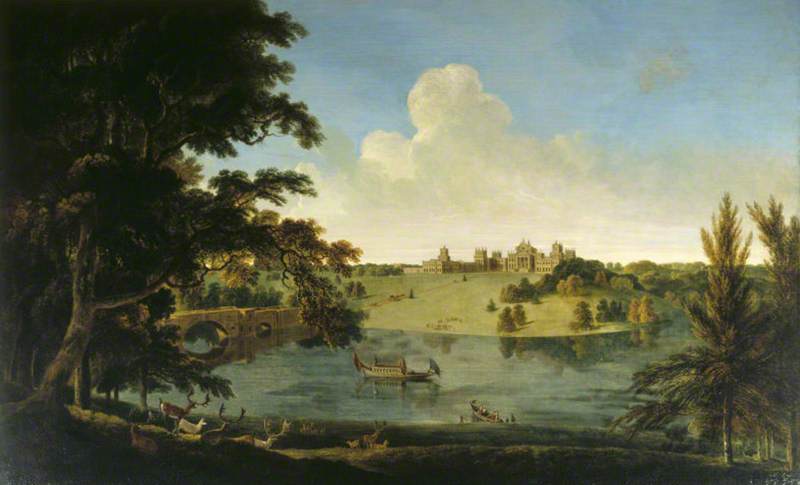Oxfordshire Day is celebrated annually on 19 October. This curation celebrates artworks depicting the wonderful, and historical, county of Oxfordshire, as well as the Methodist links with it.
-
Rev. John Wesley, MA
John Wesley (1703–1791) 1743This is John Wesley as a Fellow of Lincoln - a scholarly man, and he is shown accompanied by materials that would have supported his work - an unidentified text; some additional papers; and a large Bible.
Other copies of this work can be found in both of his Colleges (Christ Church and Lincoln), as well as the Methodist Wesley House in Cambridge. Another copy hung in the (now closed) Wesley College in Bristol.
To mark Oxfordshire Day (19 October), we are exploring Wesley's University city (now known as 'the Birthplace of Methodism' around the world) and its surrounding county - both as it was then, and as it is now.
John Michael Williams (1710–c.1780) (after)
Oil on canvas
H 89 x W 66.5 cm
The Oxford Centre for Methodism and Church History
-
Rev. Charles Wesley
Reverend Charles Wesley (1707–1788) 1749Charles followed his elder brother John to Christ Church, matriculating in 1726. Their father had previously been an undergraduate at Exeter College, and their grandfather at New Inn Hall. The latter no longer stands, but the Methodist church (Wesley Memorial Church) stands on New Inn Hall Street.
It was whilst Charles studied at Christ Church that he established the Holy Club, whose ideas evolved into Methodism.
Thomas Hudson (1701–1779) (after)
Oil on canvas
H 92.7 x W 72.4 cm
Epworth Old Rectory
-
Christ Church
Oxford from the River with Christ Church in the Foreground c.1820The relationship between the Wesley brothers and Oxford starts fully in 1720, when John Wesley matriculated at Oxford as an Undergraduate of Christ Church. He was followed by his brother, Charles, in 1726.
William Turner (1789–1862)
Oil on millboard
H 27.9 x W 47.6 cm
Yale Center for British Art
-
Tom Tower, Christ Church
Tom Tower, Christ Church, Oxford 1793
Joseph Mallord William Turner (1775–1851)
Watercolour on paper
The Courtauld, London (Samuel Courtauld Trust)
-
The Lincoln College Barge, Summer Eights
The Lincoln College Barge, Summer Eights, 1957 c.1958Following his graduation, John Wesley was appointed as a Fellow of Lincoln College in 1726, a post he held until his marriage in 1751. He then continued to refer to himself as a 'Late Fellow of Lincoln College, Oxford' until his death in 1791.
H. T. L.
Oil on canvas
H 40 x W 50 cm
Lincoln College, University of Oxford
-
John Wesley (1703–1791) c.1925
It was not just John Wesley who felt a fondness for his College. Today, Wesley is memorialised throughout the College, with a bust in the College Quad...
Herbert Read (1885–1950) (probably)
Bronze
H 63 cm
Lincoln College, University of Oxford
-
John Wesley (1703–1791) 1891
... a statue in the 'Wesley Room' (created by the American Methodist Church in the 1920s)...
John Adams-Acton (1830–1910)
Bronze
H 99 cm
Lincoln College, University of Oxford
-
John Wesley (1703–1791), Fellow (1726–1751)
... and in several artworks throughout the College collections.
John Jackson (1778–1831) (after)
Oil on canvas
H 76.2 x W 50.8 cm
Lincoln College, University of Oxford
-
View of Oxford from above Ferry Hinksey
View of Oxford from above Ferry Hinksey 1872In addition to the 'ancient' university, Oxford is now also home to Oxford Brookes University, and its three campuses, one of which (Harcourt Hill) was built by the Methodists as the second location for Westminster College (their teacher training institution) because of the connection between the Wesleys and Oxford.
This view is similar to the one found onsite today.
Joseph Fisher (1796–1890)
Oil on canvas
H 41 x W 84 cm
Ashmolean Museum, Oxford
-
The Lady Spencer College of Education, Wheatley, Oxfordshire
The Lady Spencer College of Education, Wheatley, Oxfordshire 1965Neither Harcourt Hill or another of its campuses at Wheatley were part of Oxfordshire until the 1970s. The Wheatley campus was built as a second site for the Bletchley Park Training College which relocated here in the 1960s. It later merged with Oxford Polytechnic in 1975.
Frank Boothman (active 1953–1965)
Oil on canvas
H 62 x W 84 cm
Oxford Brookes University Special Collections and Archives
-
The High Street, Oxford
View of the High Street, Oxford 1809–1810As is to be expected, much of Oxford has not changed from the city that John Wesley knew, especially within its historic centre.
Joseph Mallord William Turner (1775–1851)
Oil on canvas
H 68.6 x W 99.7 cm
Ashmolean Museum, Oxford
-
Magdalen College Tower
View of Oxford with Magdalen College Tower
John Baptist Malchair (1731–1812)
Graphite on paper
The Courtauld, London (Samuel Courtauld Trust)
-
Oxford Castle
View of Castle Hill, Oxford 1779On 24th August 1730, fellow 'Holy Club' member, William Morgan, introduced the Wesley brothers to the ‘social work’ for which the Methodist movement became famous, by persuading them to visit debtors and felons imprisoned in the Castle.
Michael Angelo Rooker (1746–1801)
Oil on canvas
H 42 x W 59.5 cm
Oxfordshire County Museums Service
-
Abingdon
Abingdon exhibited 1806?Whilst the city may mostly resemble the one John Wesley knew, the county has expanded and changed a good deal. Abingdon, for instance, is a town that Wesley would have known, but he would have known it as the county town of Berkshire.
Joseph Mallord William Turner (1775–1851)
Oil on canvas
H 101.6 x W 130.2 cm
Tate
-
Abingdon Market Cross
Abingdon Market Cross, Oxfordshire c.1605
Sampson Strong (c.1550–1611) (attributed to)
Oil on panel
H 80 x W 120 cm
Christ's Hospital of Abingdon
-
Abingdon Tithe Barn
Part of the Old Tithe Barn, Abingdon, Oxfordshire 1919–1926
William Teulon Blandford Fletcher (1858–1936)
Oil on board
H 22.2 x W 29.8 cm
Oxfordshire County Museums Service
-
Banbury
New St Mary's Church, Banbury, Oxfordshire c.1880In the September 1921 volume of their 'Proceedings', the Wesley Historical Society featured a piece on Methodism in Banbury. It records that Wesley passed through the town "in his early journeys from Oxford to Lincolnshire." Given that his family home could be found in Lincolnshire (Epworth Old Rectory is now a Methodist museum) this route could have become a familiar one to Wesley.
On his 1784 visit to the town, Wesley recorded "I desired the people would sit below in the morning, supposing not many would be present; but I was much mistaken; notwithstanding the darkness and rain, the house was filled both above and below: and never did I see a people who appeared more ready prepared for the Lord.'
William Matthison (1853–1926)
Oil on canvas
H 60.8 x W 91.5 cm
Oxfordshire County Museums Service
-
Banbury Canal
The Canal, Banbury, Oxfordshire c.1956
Sheela Drew
Oil on canvas
H 40 x W 49.5 cm
Oxfordshire County Museums Service
-
Bicester
To Major N. C. Kerr Commandant, Old Windmills Camp, Bicester, to His Retirement, July '46 1946
H. Rusiring (attributed to)
Oil on panel
H 61 x W 91.5 cm
National Army Museum
-
Burford
Burford, OxfordshireJohn Wesley visited Buford on 03 October 1739. In his journal, he noted that
"About six in the evening I came to Burford and at seven preached to, it was judged, twelve or fifteen hundred people. Finding many approved of what they heard, that they might not rest in that approbation, I explained an hour or two after the holiness of a Christian; and, in the morning, I showed the way to this holiness."
Norman Garstin (1847–1926)
Oil on canvas
H 50.1 x W 60.2 cm
Norfolk Museums Service
-
Chipping Norton
Spring Street, Chipping Norton, Oxfordshire 1968–1969
Margaret Bellwood (1912–1997)
Oil on board
H 29.2 x W 35.3 cm
Oxfordshire County Museums Service
-
Minster Lovell
Minster Lovell Turn, Oxfordshire
Basil Arthur Field (1904–1978)
Oil on board
H 34.4 x W 44.3 cm
Oxfordshire County Museums Service
-
A Gravel Pit, Shotover Hill
Gravel Pit on Shotover Hill, near Oxford c. 1818Shotover formed part of the route taken by both Wesleys on their first journey into Oxford from London.
It was also whilst travelling on Shotover Hill that Charles Wesley was robbed in 1737.
For more information on John Wesley's journey to Oxford, see: https://sway.office.com/gZOnFOZgaZJedhFx?ref=Link
William Turner (1789–1862)
Oil on millboard
H 27 x W 40 cm
Ashmolean Museum, Oxford
-
The White Horse, Uffington
English Rider 2018–2019Similar to Abingdon, Uffington was historically not part of Oxfordshire. Today, however, its ancient white horse (which also famously featured in Terry Pratchett's Diskworld series) also lends its name to one of the area councils.
anonymous artist (active since 2018)
Oil on panel
H 30.5 x W 40.5 cm
The Priseman Seabrook Collections
-
Wantage
Wantage Market Place early 19th CWantage is a historic market town found within the 'Vale of the White Horse', having previously been part of Berkshire along with Abingdon. Originally a royal town in Wessex, Wantage is perhaps best known as...
unknown artist
Oil on wood
H 48.5 x W 79.4 cm
Oxfordshire County Museums Service
-
King Alfred statue, Wantage
King Alfred (849 AD–899 AD) 1877... the birthplace of King Alfred 'the Great', or maybe as the home to the Williams Formula One racing team.
Victor of Hohenlohe-Langenburg ('Count Gleichen') (1833–1891)
Sicilian marble
-
Witney
St Mary's Church, Witney, with the Green in the Foreground 1795–1805Unlike these previous towns, Witney has long been a part of Oxfordshire.
When he visited in 1783, Wesley recorded that there had been a storm in the town the previous Saturday, and that "many thought the Day of Judgement was come. Men, women, and children, flocked out of their houses, and kneeled down together in the streets. With the flames the grace of God came down also in a manner never know before". When he visited, "a multitude flocked together, on the ‘Son of Man coming in his Glory’. The word fell heavy upon them and many of their hearts were as melting wax".
unknown artist
Oil on canvas
H 47.5 x W 62.8 cm
Oxfordshire County Museums Service
-
James Vanner Early
James Vanner Early c.1900In addition to this, Witney has also been home to a leading Methodist family: the Early's. Made wealthy through the woolen trade, James Vanner Early even funded the building of (what is now) the town council offices.
Walter Scott (1851–1925)
Photograph
H 63.8 x W 50.3 cm
The Oxford Centre for Methodism and Church History
-
New Mill, Witney
New Mill, Witney, Oxfordshire 1830Despite its name, the 'Witney Blanket Story' notes that this mill was built in approximately 1660, with at least part of it always having been owned by the Early family.
T. Langford
Oil on canvas
H 62 x W 75 cm
Oxfordshire County Museums Service
-
Blenheim Palace, Woodstock
Blenheim Palace, Oxfordshire late 18th CIn Wesley's day, Blenheim Palace was in the process of being built. This landscape depicts the site as it likely would have been around the last visit of John Wesley to Oxford in the 1780s.
British (English) School
Oil on canvas
H 145 x W 236 cm
National Trust, Chartwell
Explore artists in this Curation
View all 26-
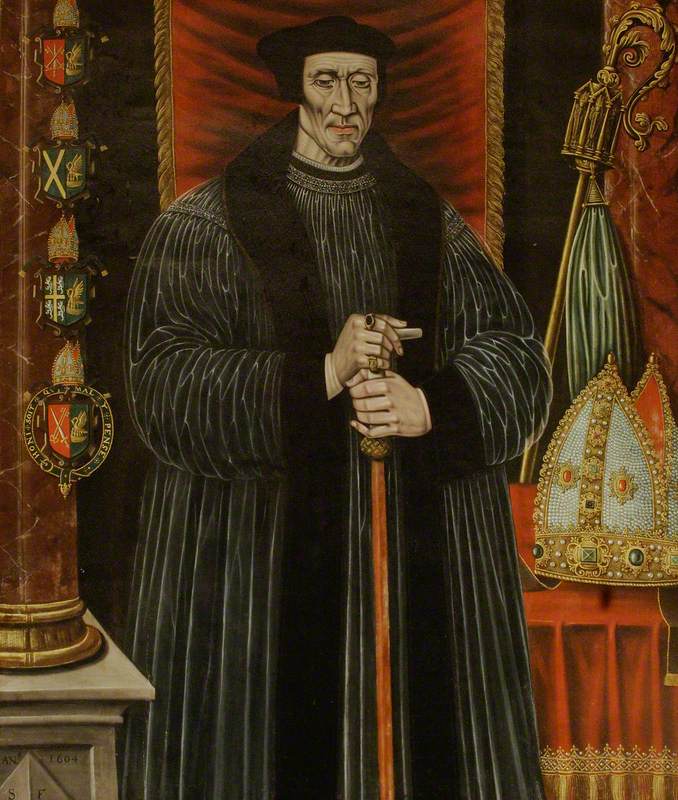 Sampson Strong (c.1550–1611)
Sampson Strong (c.1550–1611) -
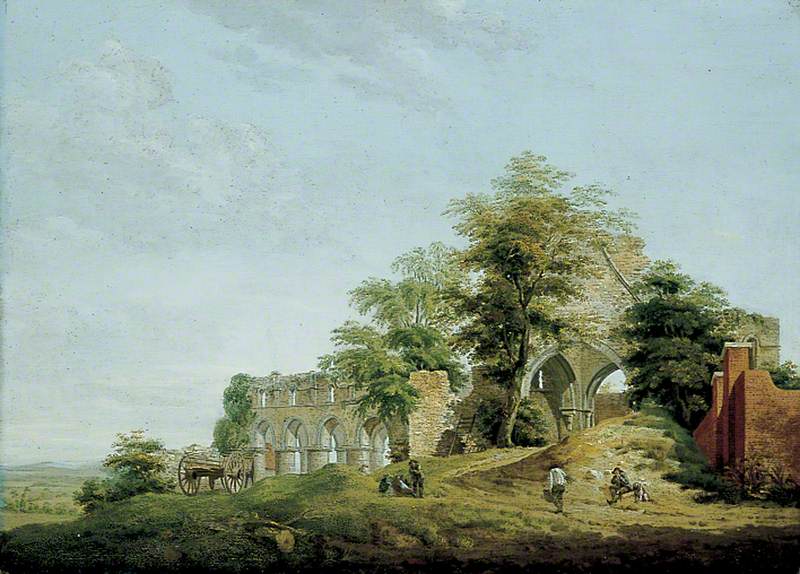 Michael Angelo Rooker (1746–1801)
Michael Angelo Rooker (1746–1801) -
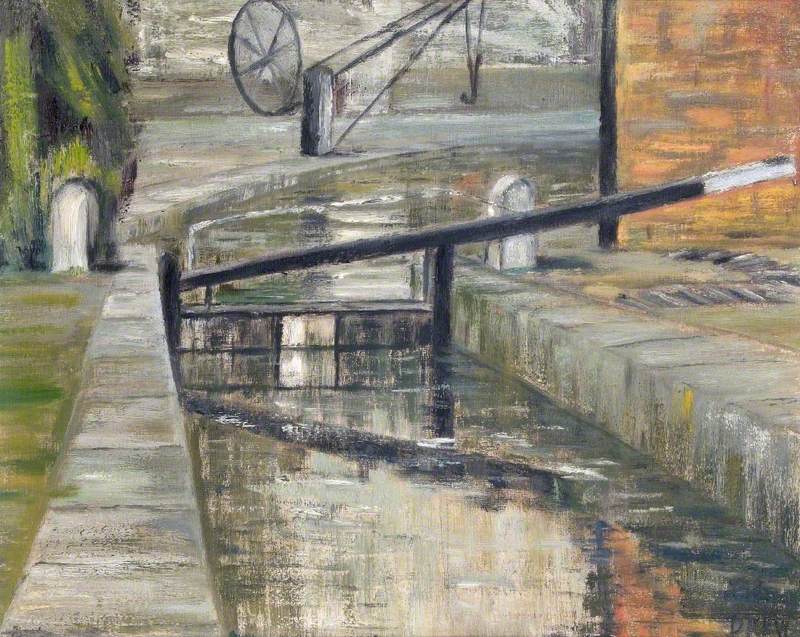 Sheela Drew
Sheela Drew -
 unknown artist
unknown artist -
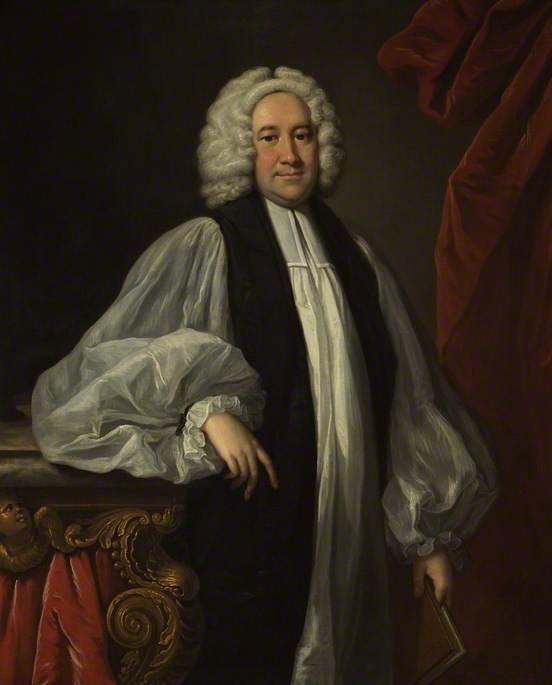 Thomas Hudson (1701–1779)
Thomas Hudson (1701–1779) -
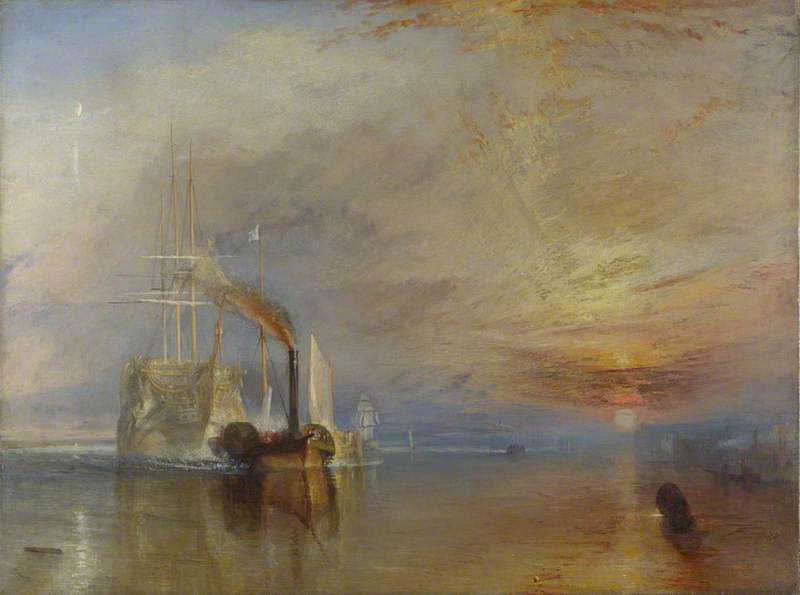 Joseph Mallord William Turner (1775–1851)
Joseph Mallord William Turner (1775–1851) -
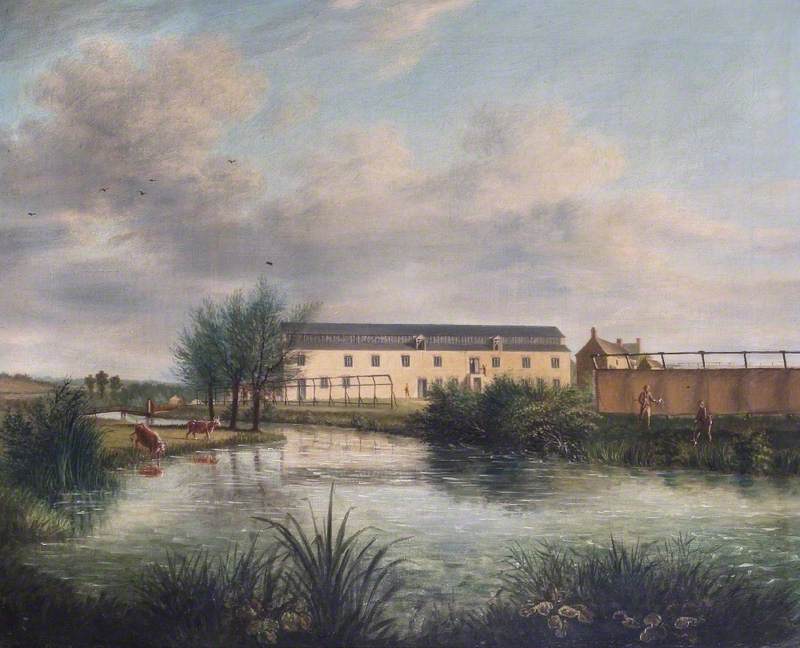 T. Langford
T. Langford -
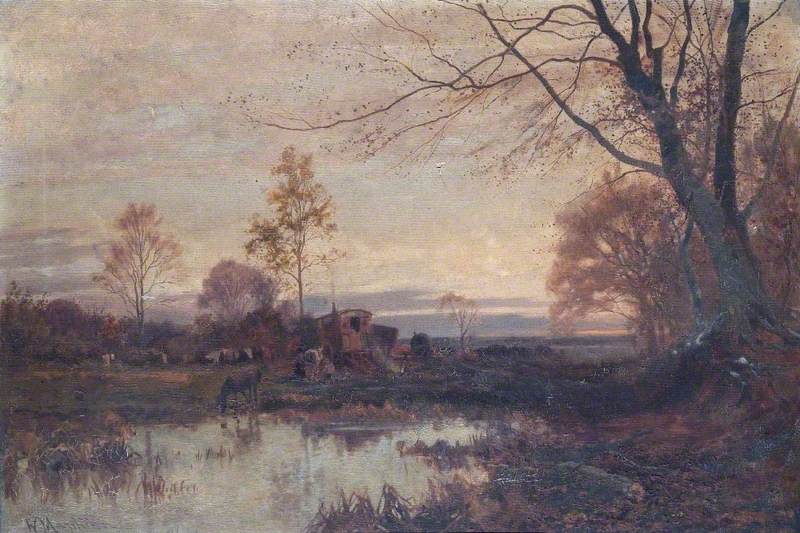 William Matthison (1853–1926)
William Matthison (1853–1926) -
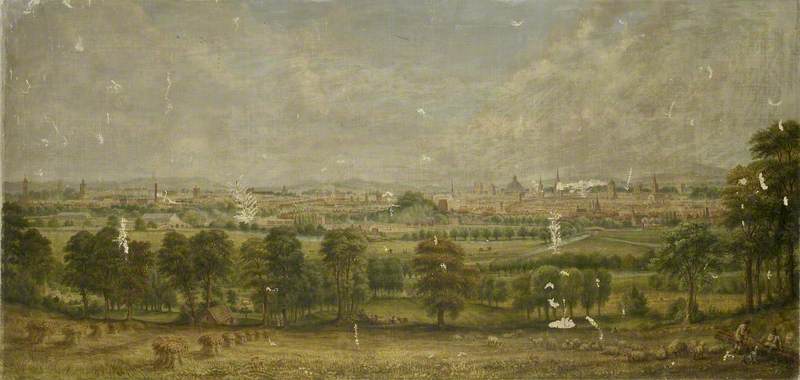 Joseph Fisher (1796–1890)
Joseph Fisher (1796–1890) -
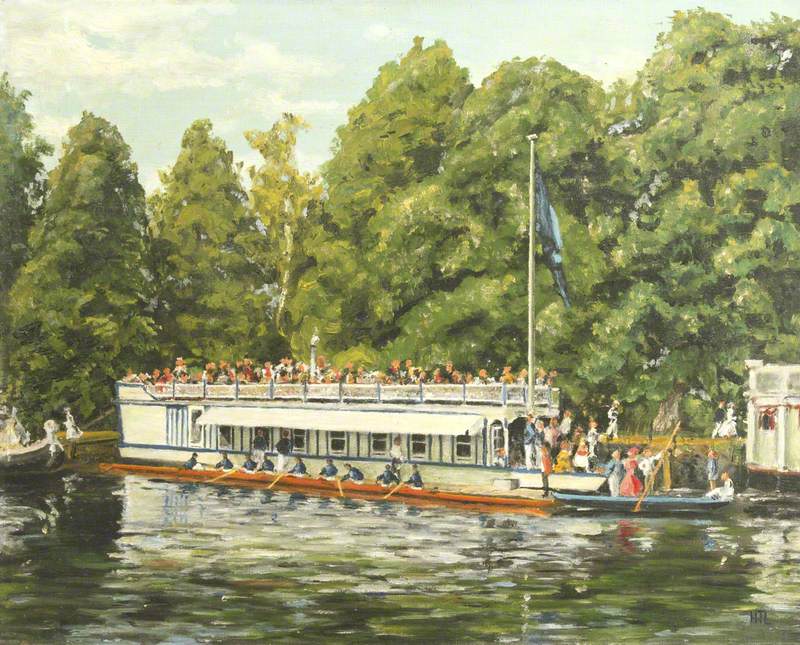 H. T. L.
H. T. L. - View all 26
